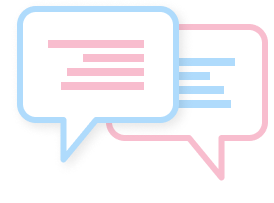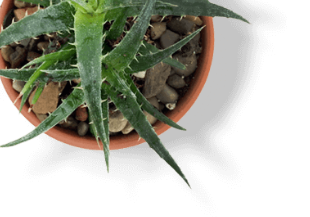When we talk about the internet, we instantly think of the word connection; and it would be difficult to find a more suitable feature to relate to the internet.
The origin of the word comes from the term Interconnected Networks. In its most faithful meaning, we can describe it as a large network of computers that are connected worldwide.
But do you know the history of the Internet? Being connected is a reality that is possible today thanks to JCR Licklider in 1962; who conceived it as a “Galactic Network” that would connect a group of computers to share data regardless of physical location.
It took 3 years to achieve the successful connection of two computers between California and Massachusetts through a telephone line. And after a few more years, the ARPANET military project was created, which aimed to connect more and more connected networks.
While the internet (or network connection) was growing, the infrastructure must also grow to support and guarantee its operation. For this reason, it was necessary to create the Domain Name System (DNS).
Already by the 90s, the internet became massive; it went from being an exclusive research tool and came to homes to change our customs. Do you remember when you had to use the telephone line to connect to the internet?
From that moment the world quickly began a technological revolution; in which connectivity and access to information have marked the history of mankind forever. Smart devices, new ways of socializing and learning, nanotechnology, 3D printers, artificial intelligence and many other advances that will continue to mark future generations.
Evolution of the internet and how it is part of our life
Nowadays the internet ceased to be a means of communication to become an indispensable item for our lives. To give an example, we can think about the world of work. We need the internet to work, to exchange emails, videoconferences, bank transactions and even to print documents. In our daily routine, it is not enough to have Wi-Fi at home; there are connection networks in the streets, museums, and restaurants. Areas such as health and education have developed thanks to the use of the internet.
The Internet has become so indispensable in our lives that it is sometimes difficult to understand how the world worked before its existence. It’s not a big deal; the internet was a luxury that quickly democratized access to information. It went from being a comfort to a need.
All the technological advances developed in recent years have been possible thanks to the invention of the internet. Connected smart objects or the Internet of Things is the latest trend, which we’ll talk about next.
What is the Internet of Things
Internet of Things (IoT) describes a scenario in which various things are connected and communicating with each other. This technological innovation aims to connect the items we use daily to the internet, to increasingly bring the physical world closer to the digital world.
The term was born in 1999 when Kevin Ashton of the Massachusetts Institute of Technology (MIT) wrote the article “The Internet of Things.” For him, people’s lack of time creates the need to connect on the Internet in new ways. These allow the creation of devices that execute tasks that we do not need to do. These devices talk through different protocols within the same network, accompany our activities, store information and, from there, help us on a day-to-day basis.
When we talk about “things,” we mean anything, really! We are already accustomed to using the internet with smartphones, computers, Smart TVs and video games, but in this context, the idea is not to have one more means to connect to the internet itself, but to make the devices more efficient. In addition to contributing to optimize natural resources, for health and other numerous opportunities.
How does IoT work
The Internet of Things is simply about objects connected through the network. They exchange information to facilitate or create various actions. For something like this to happen there are a set of three factors that need to be combined for an application to work within the concept of the Internet of Things. These are devices, the network, and a control system.
The Devices
They are all those that we already know, such as refrigerators, cars, lamps, clocks, coffee makers, television and others. In these devices, they must be equipped with the correct items to provide communication with the other elements. These limits can be chips, internet connection, sensors, and antennas among others.
The Network
It is the means of communication and we are already used to it. Well, they are technologies such as Wi-Fi, Bluetooth and mobile data (3G and 4G).
The control system
It is necessary for all the data captured from the devices through the network to be processed, so they are sent to a system that controls each aspect and makes new connections.
To simplify, imagine your home. Now think about all the things you have in your kitchen, like the refrigerator. In that scenario, the refrigerator could notify you when a portion of food runs out, you can do research and find markets with the best prices to buy a certain product. It could also suggest different food recipes with the things that are available inside the refrigerator.
And now, thinking beyond, about connectivity; imagine your alarm ringing in the morning, and send a message for the coffee maker to start brewing and notify the curtains to open slowly. Does it seem too futuristic?
Can you understand the concept we talked about earlier in action? Objects connected (the alarm clock and the coffee maker), which exchange information (time to wake up and make coffee) to create an action (ready coffee without worries).
IoT applications
A major initiative that is emerging these days is the Smart Cities. The latter are cities equipped with integrated networks to ensure the operation of a city in general. As an example of these cities we can talk about Tokyo and London; where, the concept of interconnection applies to traffic lights, surveillance cameras, public transport system, etc.
Smart home projects are just some of the applications that IoT can have. You can apply them wherever you want because all this is possible through devices that communicate with each other over the Internet.
It may seem that this concept of the Internet of Things is linked only to large companies and even public bodies. However, you can also see and take advantage of it as a business trend. Here are some examples:
Small business:
Internet of things can be applied to a store or warehouse, where you are instantly notified when an item is sold, and through a sensor, the stock of your merchandise is updated. Or a car park, where exactly the location of the car is known, and the time it has been parked.
Health:
In the health field, different systems are being developed to manage the administration of medications; to accompany the state of physical activity, heartbeat, etc.
Farming:
Also in the agricultural sector, we can use IoT. Currently, there are systems with sensors that send notifications about crop status, weather conditions and pest control.
IoT is not a distant reality to the present day; we do not need to watch TV series to know that it is already part of our routine and our lifestyle. There are many uses and resources that we can optimize with this trend.
What is the future of IoT?
Most estimates state that, by 2025, there will be more than 21 billion IoT devices, and some believe the number could be even greater. As more IoT products reach the market, an increasing number of people are getting involved in the smart home trend, and therefore, the expectation that household items can connect to Wi-Fi is already part of almost any decision when buying a new product. But independent consumers will not be the only ones who will use IoT devices. Cities and businesses will increasingly adopt smart technologies to save time and money. That means that cities will be able to automate, manage remotely, and collect data through visitor kiosks, surveillance systems with video cameras, bike rental stations and taxis, and an increasing number of functions that are already being deployed in several smart cities in the United States and other cities globally.
The report ensures that IoT will dominate business sectors
A Microsoft report states that 94 percent of companies will use IoT by the end of 2021. The report also proved that IoT is already an intrinsic part of a variety of important manufacturing, commerce and transportation industries, and even in the areas Government and medical care. The growth of IoT shows no signs of slowing down: adoption is expected to increase by 9 points over the next two years, which means that 94% of companies will use IoT by the end of 2021. According to Windows Central, Microsoft hired Hypothesis Group to carry out the investigation during the first half of 2019, and the data comes from a 20-minute online survey with more than 3,000 executive representatives of companies globally, focusing on the United States, the United Kingdom, Canada, Germany, France, China, and Japan.
Also Read
How IoT Became More Popular During Covid-19?
Best IoT Development Companies in Texas
10 Predictions and Trends of the Internet of Things in 2020
Top IoT Mobile Application Development Trends to Anticipate in 2020
Top IoT Development Companies in Boston
Recent Articles
The Top 10 Successful App Developers...
Hiring an app developers company is no easy feat. In...
Top 10 Innovative Mobile App Developers...
San Francisco has an incredibly diverse and a magnificent tech...
Top 10 Most Trusted Mobile App...
Houston boasts of a splendid tech landscape that is mushrooming...






